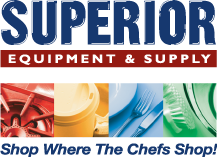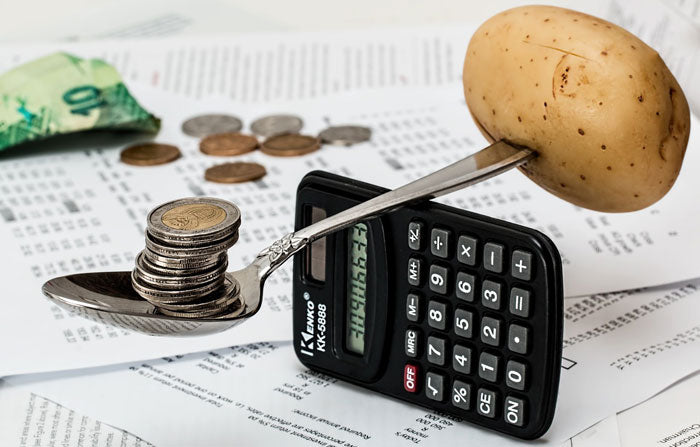
Some restaurant owners don’t know how to control the cost of food properly. They put prices on entrees and appetizers, don’t track profit margins correctly and have no clue about the whole food cost control thing.
Start by Tracking the Cost of Food Better cost control starts by tracking the food expenditures of your business. But it needs to go beyond your internal figures. Predictions and forecasts are a good place to start. When you know what the forecasted prices will be, you can adjust your menu accordingly. You can choose to Revamp items or Remove items
The United States Department of Agriculture is a good start. The Consumer Price Index, listed by the Department, can help a restaurant better understand what their future prices are expected to be.
When prices fall, you earn higher profit margins and everything works out perfectly. The issue is that when prices rise, they can cut into already-low profit margins, making it difficult to pay wages or energy bills. Use a food costing app to keep tight control over all of your food.
Incorporate Strict Inventory Control Food waste is common, but did you know that 63 million tons of food is wasted in the US every year? Inventory control is essential for keeping costs checked. If you’re not tracking inventory, you’ll waste more inventory than you want.
A few measures should be incorporated: Assign inventory responsibilities on a weekly or bi-weekly basis. This allows more than one team member to better understand how inventory is managed and what goes into the control process.
Incorporate a First-in, First-out system. What this allows for is the oldest inventory to be used first, allowing items to stay fresher for longer.
Daily inventory for highly used items should be kept. Accurate inventory should be kept weekly and monthly.
Keep a “dollar account” for all inventory.
Inventory management tools are designed specifically for restaurants to be able to keep tabs on all of your inventory. The goal is to know what your inventory is at all times. This data will allow you to learn how to reduce food cost by:
Ensuring that items are not unnecessarily ordered
Wasted due to spoilage
The data that is kept from proper inventory control can be your go-to data for everything from food portion control to tracking waste.
Stop Purchasing Already-Prepped Food Preparation takes time, so a lot of owners will purchase food that is "ready" rather than having the food made by workers. It sounds good on the outside because workers don’t have to spend their time prepping food.
The downside is that the already-prepared items cost more. You'll be paying a higher price because such food requires less work. Labor costs need to be factored into the process, and you also need to consider your control over portions.
There are also benefits to being able to manage everything properly:
Portion sizes
Leftovers
Costs
While already-prepped food may seem like the easier option, it will often be more expensive than having a cook prep it.
Manage Food Portions Properly Food portions can vary. Some restaurants have subpar dishes, but they offer such large portions that people flock to these establishments. Other, fancy restaurants, can get away with being able to offer smaller portions because their food is higher quality.
Food waste will eat into your profits, and it’s one of the biggest expenses for restaurants. Food cost management software can help, and it will allow a restaurant to better control waste. You want to refine your menu over time, and the goal is to:
Serve the right portion sizes
Reduce waste
A lot of restaurants will offer different wing sizes, such as: four, six, eight or even a dozen wings.
How do you determine what the ideal portion size will be? Watch the plates that come back to the kitchen. Make notes of dishes that always seem to have leftovers that are discarded. If the fettuccine dish always has food leftover that’s discarded, you may want to reduce the portion size.
Overfilling plates can lead to losing money.
Cooks also need to be held accountable for their dishes. For example, a cook may “eye” all of the ingredients, and instead of a 1/4-cup, the cook makes 1/3-cup of food. The excess may be wasted and will also lead to you spending more per dish.
Work with chefs to better understand how to adjust portions to what the patrons of the restaurant want.
You can also ask your servers to monitor the plates for you, making it a point to note all food that is discarded. Restaurant food costs are directly tied to the portions that you establish.
Track All of Your Food Waste Managing waste is the most important method for controlling food costs in restaurants. You'll want to keep track of:
Food spillage
Discarded food
Returned food
Burned food
If servers are continuing to return meals, it’s wasted food. You cannot serve the returned dish to a customer, so it is counted as waste. Food that is burned or spilt is also an issue. It's up to the owner and manager to keep all of these wasteful events under control.
Track all of the waste that your restaurant produces. you can track the waste, you can better control your costs. Knowing why and when food is wasted is key to keeping your costs under control.
Adjust Menu Items and Adapt Pricing Menu items need to always be center stage in food cost control. You may be purchasing ingredients that are rarely used, so the items are discarded at a higher rate. The dish may offer a nice profit margin, but this profit means nothing if 30% of the ingredients are discarded every week.
Pricing may also need to be adjusted. Let's say that your wings are $5.99. They sell well, so you keep them stocked at all times. The issue is that you’re still discarding 10% of the wings every week. A lot of restaurants will offer half-price deals once a week.
For example, you may choose to offer half priced appetizers on Tuesday night. New shipments come in on Wednesday, so you’re able to use up any remaining wings in your inventory before they spoil.
Offering discounts or deals strategically throughout the week or month may be able to keep your costs down because less food is wasted. You can also enter a purchasing group with local restaurants that will allow you to negotiate better prices for your food.

